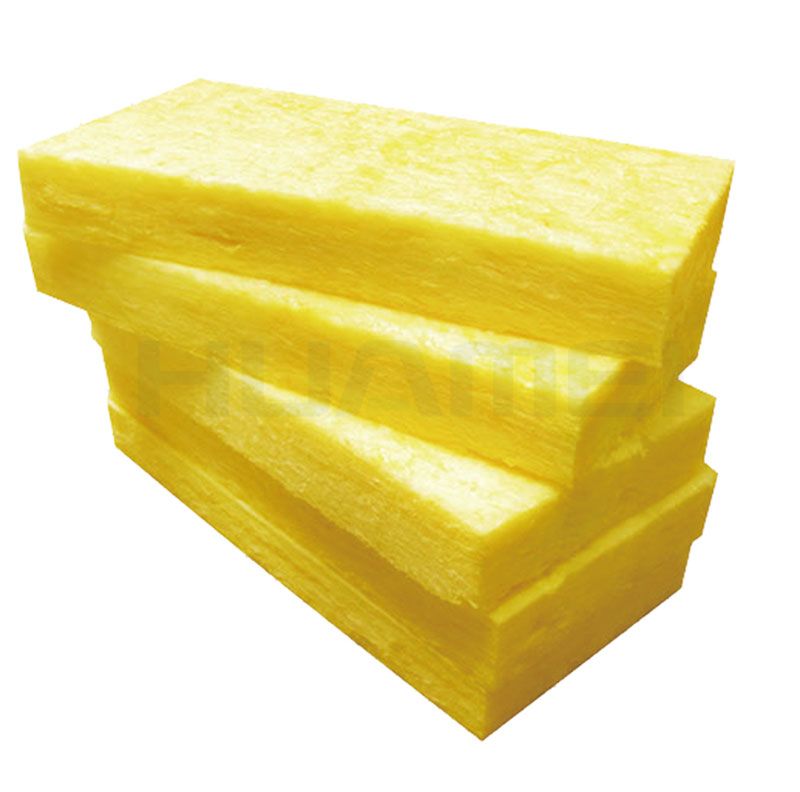Glass wool insulation products and rock wool insulation products have now become the main insulation materials. Household needs, industrial needs, and major businesses also use various insulation materials. Can you tell the difference between glass wool and rock wool? Are their performance and their uses? In the current market, many people do not know which kind of venue uses glass wool and which kind of rock wool? Here Huamei Glass Wool and you break down the use and difference of the two in detail.
1. The difference in production performance:
Glass wool has a lower specific weight than rock wool, low content of slag balls, low thermal conductivity, long service life, and high fiber toughness. However, the maximum temperature of rock wool is about 600°C, and glass wool is only about 260°C.
Glass wool uses glass as the main raw material, and it is a glass thin-flow fiber that is subjected to high-speed centrifugation and high-temperature stretching. Glass wool has a low bulk density, high fiber toughness, low thermal conductivity, porous, and relatively high temperature resistance, about 260 degrees; rock wool board is made of basalt as the main raw material, inorganic fibers made by high temperature melting and high speed centrifugal melting. Due to the different raw materials, the rock wool board has a relatively high bulk density, and has the characteristics of acid and alkali resistance, heat absorption, non-combustibility and high temperature resistance (high temperature resistance of about 600 degrees).
Glass wool has a high temperature resistance of about 260 degrees. Based on this, it is mostly used for the insulation of buildings and low-temperature pipelines. Rock wool board is about 600 degrees of high temperature resistance. It is mostly used for the insulation of high-temperature thermal pipes or electrical equipment, as well as fire insulation on external walls. material.
2. Differences in product use:
Glass wool is generally used for insulation at temperatures below 200°C. It is mostly used for insulation of general buildings or low-temperature pipelines. Rock wool is generally used for insulation at temperatures of 50°C. It is mostly used for thermal insulation of high-temperature thermal pipes or electrical equipment.
From the data of materials and other aspects, it is used for thermal insulation and fire-proofing sites. Rock wool can be used as thermal insulation and fire protection for sites that require special high temperature resistance. From the perspective of cost savings, if the site is not high in heat resistance, Ordinary thermal insulation can use glass wool, like the roof insulation of the factory building, glass insulation can be used for wall insulation; such as large industrial pipes for fire insulation, it is more reasonable to use rock wool!
3. In addition, Glass Wool and rock wool also have certain differences in terms of production technology:
Glass wool belongs to a kind of artificial inorganic fiber. It uses quartz sand, limestone, dolomite and other natural ore as the main raw materials, and uses some soda ash, borax and other chemical raw materials to melt into glass. In the melted state, they are blown into flocculent fine fibers by means of external force blowing. The fibers and fibers are three-dimensionally intertwined and entangled with each other, showing many small gaps. This gap can be regarded as a pore, so glass wool can be regarded as a porous material, which has good thermal insulation and sound absorption properties, such as Glass Wool Batts.
Glass Wool Batts
Rock wool products are made of delicate basalt as the main raw material. After being melted at high temperature, inorganic fibers are made from high-speed centrifugal equipment, and then special adhesives and dust-proof oil are added. The fibers are laid on a swing belt and the fiber arrangement structure is changed by special equipment. A new lightweight insulation material made by curing and shaping.
The above is the difference between glass wool and rock wool, I hope to help everyone.

评论
发表评论